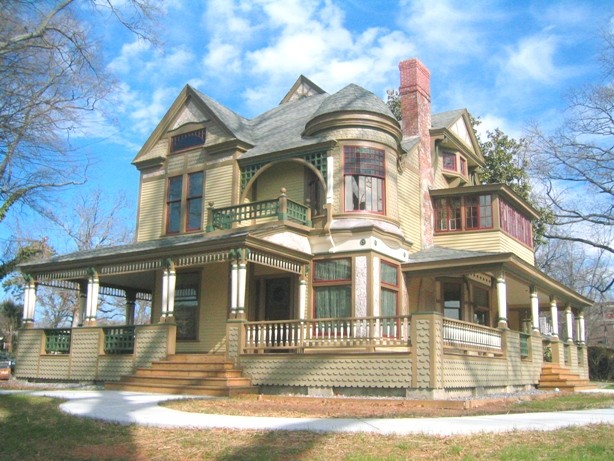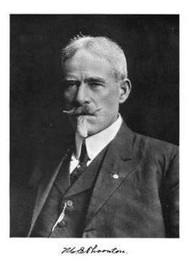Harper House/Hickory History Center
Introduction
Text-to-speech Audio
Images
The front of the Harper House

Colonel Marcellus E. Thornton

Backstory and Context
Text-to-speech Audio
Daniel Webster Schuler, who constructed the Harper House in 1887, was born in Michigan on December 28th, 1850. When he moved to Hickory, he founded the town's first bank, but he passed away on August 14th, 1890, at the young age of 39 and was buried in his home state. Following Schuler's death, the Thornton family resided in the building from 1892 to 1916. Colonel Marcellus E. Thornton, who was a former lawyer, an entrepreneur with the Thornton Light & Power Company, a newspaper editor, and the author of The Lady of New Orleans, married the widow Elizabeth Thornton (née Elizabeth Camp). After the Thornton's tenure at the home, the house was obtained by Mrs. Minnie C. Taylor, who sold the building in 1923 to Finley Gwyn Harper, Sr. (1880-1951), the operator of the local Harper Motor Company. The Harper family retained the house until 2000, when Finley Harper's step-daughter Mary Banks and his grandchildren Anne McPherson Harper Bernhardt, Lee Corinne Harper Vason, Mary Gwyn Harper Addison, and Betty Banks Harper Shelander arranged for the Historical Association of Catawba County (HACC) to acquire the building.
The HACC organized a preservation project and raised $2,000,000 dollars to restore the home to its original grandeur, and the home is now open to visitors as a house museum, with tours being offered on Thursdays through Saturdays between 10 A.M. until 3 P.M on the hour. The home is notable for showcasing what the North Carolina Department of Archives and History claims is the "the finest Queen Anne interior styling in the entire state," and the fish scale shingles, Tudor style woodworking on the top of the building, the side tower, roughcast colored glass and stones to make the house shine in the sunlight, spindled porch railings, and original stained glass are additional features that distinguish the house as an important, well-preserved example of Queen Anne-style architecture in Hickory. Visitors who take one of the guided tours are offered the chance to step back in time and to see not only a glimpse of Hickory's history, but that of Victorian life in the south during the late-nineteenth century.
Additionally, the Bonniwell-Lyerly House, which was originally constructed in 1912 in the Craftsman style, was moved two blocks in 2004 to be on the same lot as the Harper House and now serves as the Hickory History Center, which features a conference facility, the Betty Allen Education Center, and the Margaret Huggins Gallery. The building was originally constructed by George C. Bonniwell, who came to Hickory in 1878 from Philadelphia, where he had served as an engineer for the National Centennial Exposition, and who was an architect, engineer, and builder, and co-founder of the local Piedmont Wagon Company. His daughter Josephine, who painted the oak tree border in the home's dining room and who helped establish the Hickory Museum of Art, and her husband, Eubert Lyerly, who was the mayor of Hickory, owner and president of Elliott Knitting Mills, and president of Clay Printing Company, were the first residents of the home, and the building remained in the family until 2004, when the Lyerly family arranged for the HACC to acquire the building for preservation. Both the Harper House and Lyerly home reflect Hickory's rich history and larger architectural trends in the late-nineteenth to early-twentieth centuries.
Sources
Harper House/Hickory History Center, Historical Association of Catawba County. Accessed December 1st 2019. https://catawbahistory.org/harper-househickory-history-center.
http://historichousecolors.com/portfolio-item/victorian-queen-anne-hickory-history-center-hickory-north-carolina/
https://www.facebook.com/HarperHouseHHC/photos/pcb.10155094181681032/10155094146036032/?type=3&theater
